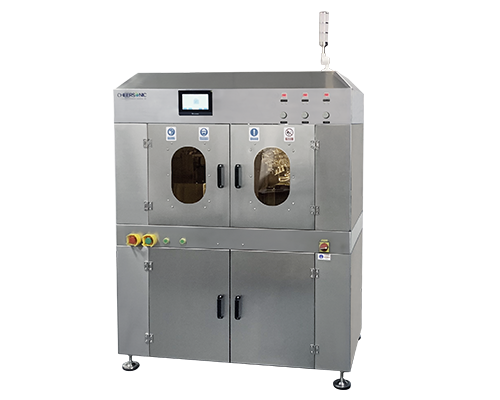Ultrasonic Spraying of Rapamycin
Rapamycin (RAPA) is a new macrolide immunosuppressant. It is a white solid crystal with a melting point of 183-185°C. It is lipophilic and soluble in methanol, ethanol, acetone, chloroform and other organic solvents. Dissolved in water.
Source of rapamycin:
Rapamycin (also known as “Sirolimus”) is a secondary metabolite secreted by soil Streptomyces first discovered by scientists in the soil of Easter Island, Chile in 1975. Its chemical structure belongs to the “triene macrolide compounds. In 1977, it was discovered that rapamycin has an immunosuppressive effect, and in 1989, RAPA was tested as a new drug for the treatment of organ transplant rejection.
Principle of action:
Rapamycin is a macrolide antibiotic, which has a similar structure to Prograf (FK506), but has a very different immunosuppressive mechanism. FK506 inhibits the proliferation of T lymphocytes from G0 phase to G1 phase, while RAPA blocks signal transduction through different cytokine receptors, blocking the progress of T lymphocytes and other cells from G1 phase to S phase, compared with FK506 , RAPA can block the calcium-dependent and calcium-independent signaling pathways of T lymphocytes and B lymphocytes.
Advantages of ultrasonic spraying:
Uniformity: Ultrasonic spraying technology can realize the uniform distribution of the coating and ensure the consistency of the drug on the surface of the medical device. This helps to ensure the stability of drug delivery and effect.
Controllability: Ultrasonic spraying technology can adjust the drug flow rate according to demand. The speed and duration of drug release can be controlled by adjusting parameters such as drug concentration and coating thickness of the coating.
Reduce drug consumption: Compared with other coating technologies, ultrasonic spraying technology can use drugs more effectively and reduce drug consumption. This not only reduces drug costs, but also reduces the risk of potential toxic side effects for patients.
Improve coating adhesion: Ultrasonic spraying technology can form a uniform and dense coating on the surface of medical devices, and improve the adhesion between the coating and the surface of the device. This helps to reduce the risk of peeling and peeling of the coating and prolongs the life of the drug coating.
High production efficiency: Ultrasonic spraying technology is easy to operate, the equipment investment cost is relatively low, and mass production can be realized.
About Cheersonic
Cheersonic is the leading developer and manufacturer of ultrasonic coating systems for applying precise, thin film coatings to protect, strengthen or smooth surfaces on parts and components for the microelectronics/electronics, alternative energy, medical and industrial markets, including specialized glass applications in construction and automotive.
Our coating solutions are environmentally-friendly, efficient and highly reliable, and enable dramatic reductions in overspray, savings in raw material, water and energy usage and provide improved process repeatability, transfer efficiency, high uniformity and reduced emissions.
Chinese Website: Cheersonic Provides Professional Coating Solutions


